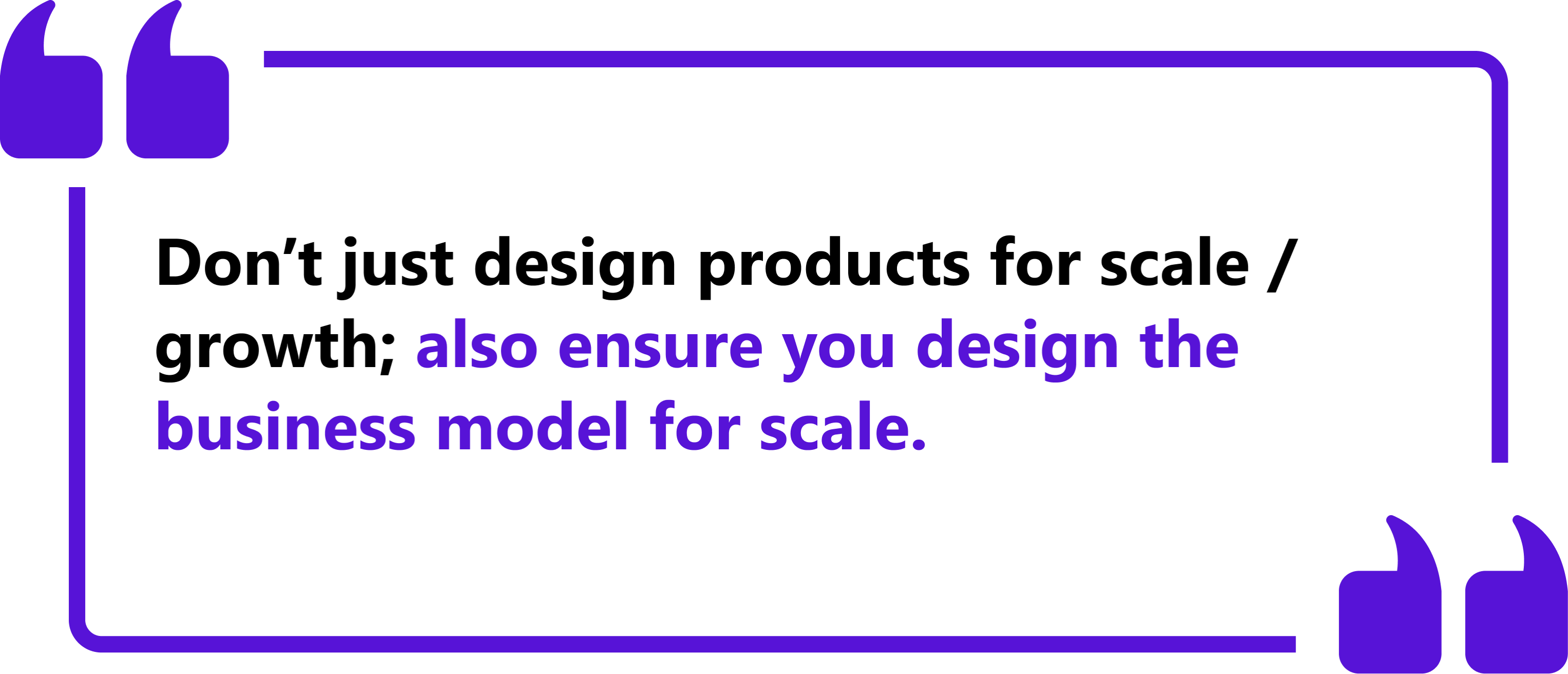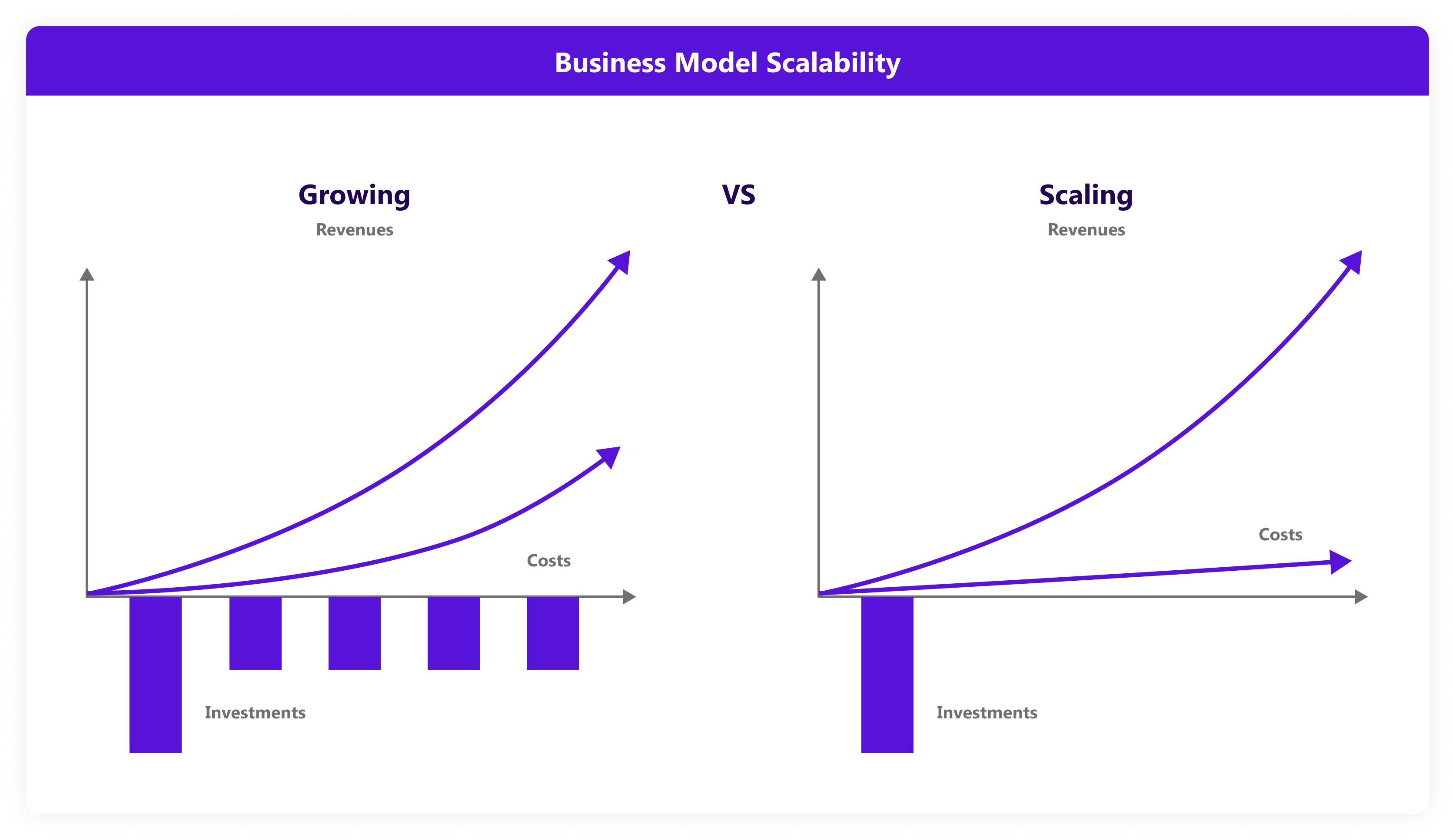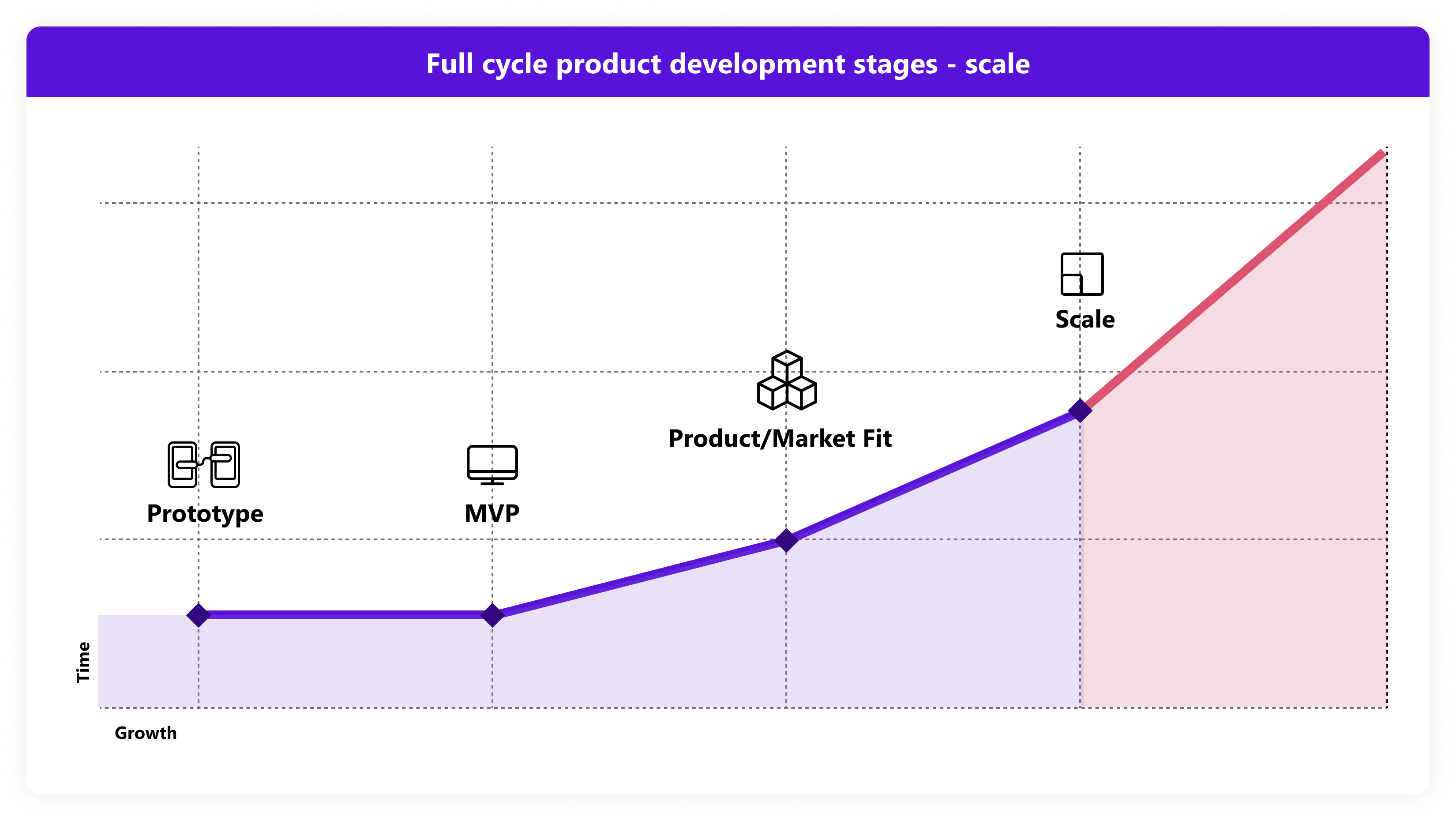¶ Product Scaling
¶ What it is
Scaling is to expand the capabilities or areas of your business - which could refer to real products, services, marketing strategies, etc.
¶ Why it is useful
When the product-market fit has been reached, product scaling can help reach and extend the Maturity Phase, which provides the most benefits. Product scaling also makes the product more sustainable and delays the Decline phase.
¶ When to use it
When a product is proven successful, it’s time to consider the following steps and how to scale the success.
¶ Who is involved
The product manager, product owner, business owner, marketing manager, and operations manager must be involved.

¶ Directions to scale a product
The initial question about scaling is what to change/add. On the other hand, you should always be sure about your product's strengths first before you try to make changes. Here are the common aspects of potential work to scale up:
- New user needs
For example, with the broader release of the product, new users from more areas join the user groups. They may bring in more ideas and needs your product doesn’t support. To satisfy them significantly, you can scale the proposition to meet their additional needs and address their other JTBDs and pains.
- User behaviour analysis
User activities teach the product teams how people use your product in reality. You will also get data about which elements are popular and which are not. These can point to areas for scaling.
- Customer service feedback
Sometimes product managers even go and take the customer service role for one day per week to learn the real user scenarios and needs that may be reported as issues.
- Unexpected usages
It’s commonly understood that a product will be used somehow but often differently from how it is designed. This finding helps the product managers figure out how the product is expected. Usage outside of expectation boundaries can indicate scale opportunities.

¶ Business Model Scalability
Scalability in business models refers to the effect where an increase in usage, traffic, revenues, etc., does not lead to the same increase in cost - i.e., gain and price increase at a different pace, and cost increase is significantly slower than revenue increase.
Here are four business model scalability patterns:
- Open more distribution channels at lower CAC while LTV is increasing
- Outsource capital investments (such as inventory) to partners and focus on asset-light investments that yield higher returns
- Create a platform model per which other people transact value, and you facilitate that transaction for a fee
How do we make the business more scalable?
- Ensure the cost structure that increases over time is a mainly variable cost.
- Manage cost increases to scale sub-linear with revenue - every new dollar in revenue should cost less and less additional money.
- Review revenue and cost structures regularly and strategies optimisations (e.g., per the patterns above)
- Conduct regular financial reviews to understand your progress,
Last but not least, one of the essential principles of Scaling is to be cost-effective. This is especially compared with Product Growth, which needs more investment.

¶ Useful Tips
¶ Product Growth v.s. Scaling
- Product Growth
Product growth usually refers to when a product grows after go-to-market to get a place in the market. It goes together with validating a product's success, attracting new users, converting them to real users, etc.
- Product Scaling
Product scaling usually takes place after or in parallel to product growth. When the original business objectives of the product have been fulfilled to a satisfactory extent, it is time to scale up the business with extended areas and services. This means opening up a specific new location or exploring more opportunities to attract new audience users, but still with the original product as a base or platform.
